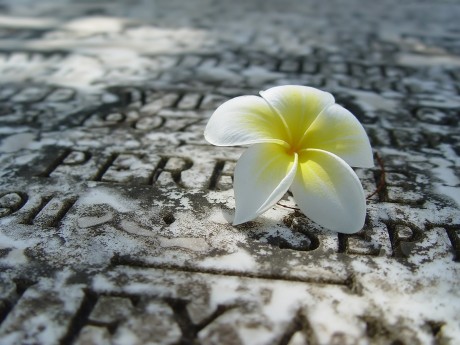Plumeria is related to the Oleander, Nerium oleander, and both possess an irritant, rather similar to that of Euphorbia. Contact with the sap may irritate eyes and skin.Each of the separate species of Plumeria bears differently shaped, alternate leaves with distinct form and growth habits. The leaves of P. alba are quite narrow and corrugated, whereas leaves of P. pudica have an elongated shape and glossy, dark-green color. P. pudica is one of the everblooming types with non-deciduous, evergreen leaves. Another species that retains leaves and flowers in winter is P. obtusa; though its common name is « Singapore, » it is originally from Colombia.
Plumeria flowers are most fragrant at night in order to lure sphinx moths to pollinate them. The flowers have no nectar, however, and simply dupe their pollinators. The moths inadvertently pollinate them by transferring pollen from flower to flower in their fruitless search for nectar.
Plumeria species may be propagated easily from cuttings of leafless stem tips in spring. Cuttings are allowed to dry at the base before planting in well-drained soil. Cuttings are particularly susceptible to rot in moist soil.
In order to get the most from a plumeria plant with respect to growth, size, blooms, and scent, there is a fine balance that must be maintained. Ideally, a plumeria is in its element when it can have plenty of sun and appropriate water, so as to maintain soil moistness just above a state of dryness. On the other hand, if the plant receives a lesser amount of sun, then a lesser amount of watering is necessary – again, to ensure that soil moistness stays just above the dry state. The more sun, the more water. The less sun, the less water. A common mistake of novice plumeria growers is to overwater the plant when it is not able to be exposed to enough sun, thereby resulting in a rotted root system. Conversely, if a plumeria plant is able to receive maximum exposure to the sun, but they aren’t watered enough, the plant will die.
Propagation can also be by tissue culture from cuttings of freshly elongated stems or aseptically germinated seed. Pruning is best accomplished in the winter for deciduous varieties, or when cuttings are desired.
There are more than 300 named varieties of Plumeria.



